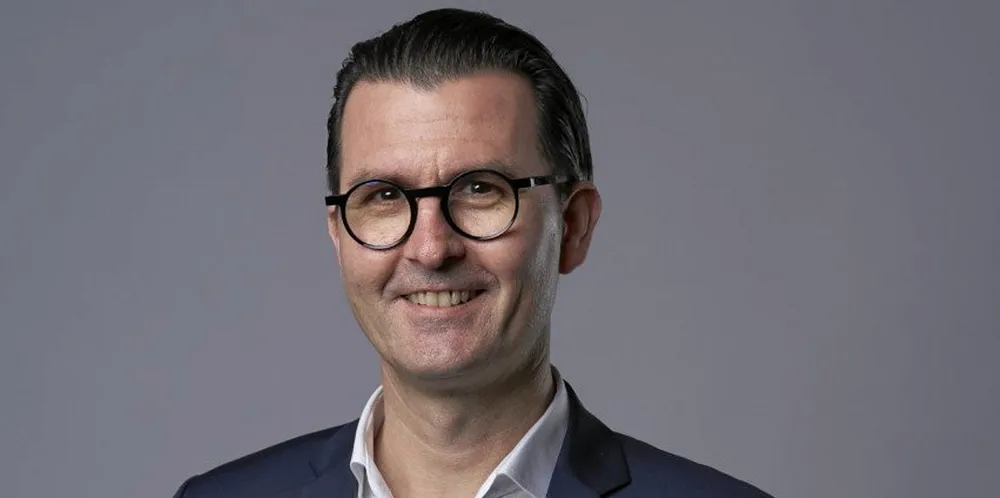'A world leader in 2030' | Start-up aims for gigafactory in three years to lead EU solar revival
France's Carbon wants to reach up to 20GW of manufacturing capacity in 2030 as it claims tide of events is bringing PV production back to Europe

Aided by high power prices and riding a wave of momentum to bring renewable production capacity back to Europe on energy security grounds, French start-up Carbon hopes to be in the vanguard of the EU's solar renaissance with a target to build a first gigafactory in its home market by 2025.
After a first factory in France, the company plans to rapidly expand its EU-wide manufacturing footprint to 15-20GW by 2030, with the intention to “master a large part of the value chain” from the ingot to the module, including the wafer and the cell.
“There will be several factories,” Richard said in an exclusive interview, adding that the company is open to options “all over the EU”.
“Carbon aims to be a world leader in 2030, it is a European company with a French base.”
Continent-wide industry group SolarPower Europe with its partner EIT InnoEnergy in 2021 launched the European Solar Initiative that aims at reshoring 20GW worth of solar PV manufacturing in the EU by 2025, from polysilicon to module. The EU’s module production capacity last year stood at 8.3GW, but from manufacturers with small capacities (sub-1GW) which mostly bought the solar cells for their panels in Asia.
Despite the obvious need for large amounts of solar panels for the planned massive expansion by 2030 and beyond, it is not immediately clear how modules ‘Made in Europe’ would suddenly be competitive with Chinese products that in the past decade had pushed most of Europe’s traditional manufacturers (mostly from Germany) into bankruptcy.
Carbon’s Richard thinks that is achievable for a series of reasons – from volumes to state aid.
“We have currently a target to reach pricing that we consider competitive… especially in regards to major Chinese manufacturers. It is mainly a question of volumes,” Richard said, when asked how his company intends to reach competitiveness.
“That allows us to discuss and set up suppliers, relationships at a high level, including [EU member] states, including the European Union. Also to be able – thanks to volumes – to invest massively in R&D and innovation, in order to work closely with many research institutes and companies.”
Carbon already has “the support of the French government” which eventually could mean financial aid, he said, adding the company will bid into many tenders that are currently open to tap into a “huge budget to reindustrialise the PV value chain in Europe.”
“Especially in France. If you do that correctly, you have a nice catch of money that allows you to continue.”
Next to possible French and EU financial support (for example via the glass manufacturing or solar polysilicon supply strategies), currently high electricity prices also help, Richard pointed out.
“We have a price of energy that has changed. It should stay high in the future,” the chairman said. “Therefore, the comparison has totally changed in terms of LCOE. There will be some things that have been problems in past, that will be a no-brainer in the future.”
Richard stressed that Europe’s “geo-strategical environment” had changed in the past 15 years, but also lamented that the continent “didn’t really fight in the past to maintain our industry in Europe,” while China from the beginning had pursued a long-term planning policy in the solar sector.
The EU should strive for being supplied with panels from its local industry to a 60-70% level in coming years, Richard said.
“If you take a target of 100GW [of solar] per year in Europe from 2030 on, it means a minimum of 60GW supply by EU industry in order to be in a friendly environment, geopolitically speaking,” he said, adding exports to the US are also targeted by his company.
Before Carbon takes an investment decision, the start-up plans to close a first financing round by the end of this or the beginning of next year.
“This will allow Carbon to recruit a first team really dedicated to work on the design, on the permitting, on all the what is related to the factories,” Richard said, adding the company wants to raise a minimum of €1bn ($1.05bn) by 2025.
Carbon at first wants to work with the TOPCon technology that is being co-developed by the International Solar Energy Research Center (ISC) in Konstanz, Germany, one of the company's technology partners.
TOPCon (Tunnel Oxide Passivated Contacts) is a technology that aims at reducing recombination losses from the metal contacts and the silicon surface of solar cells. It uses a thin oxide layer, in addition to heavily doped polycrystalline silicon between metal contacts and the wafer.
The world’s major solar manufacturers are expected to switch from industry-standard PERC cells to TOPCon technology in coming years, Carbon reckons, pointing to what it thinks is the opinion of most analysts.
“We believe that TOPCon Technology is the first step towards European industry renaissance, and we work hard already on the next evolutions,” ISC Konstanz director Radovan Kapocek said when reaffirming the technology partnership with Carbon this week.
“The need for a dynamic and competitive solar industry in Europe has never been more important than now.”
In the future, Carbon with the help of ISC Konstanz also plans to use IBC (interdigitated back-contact) technologies.
(Copyright)